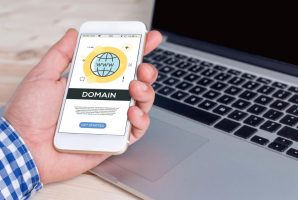A blog editorial calendar can best be described as a strategic planning tool. Essentially, it’s a blueprint for your blog to map out when and what you plan on writing and posting to your blog. This, in turn, keeps your content organised and consistent, delivering unique information for your audience regularly.
Let’s learn how to craft an efficient editorial calendar for your blog posts. Here, you will learn about brainstorming topic ideas through post-scheduling, lining up important dates, and tracking your progress.
Creating an Effective Blog Editorial Calendar
Consistency is key in blog writing. Posting fresh and engaging material will increase your repeat visits and status as a ‘go-to’ authority. But juggling topic ideas, deadlines, and promotion can quickly become too much. This is where a blog editorial calendar comes in.
An editorial calendar is a skeleton that should allow for efficient content planning, scheduling, and management. It’s mission control for your blog’s content planning, scheduling, and management.
An editorial calendar keeps you organised, helps you meet deadlines, and will allow you to build a readership base of dedicated fans. And now, let’s learn how to make a blog editorial calendar that will streamline your workflow and make your blogging efforts work for you.
1. Define Your Blogging Goals and Objectives
Before we get into your calendar’s specifics, let’s take a moment to nail down your blogging goals. What do you hope to achieve with your blog? Are you going for brand awareness, lead generation, increased website traffic, or to establish thought leadership? Your goals will inform your content strategy and, therefore, what kind of content you produce.
Furthermore, defining what you want to achieve sets a yardstick for measuring the success of your blog. You will have clear and measurable goals regarding how and where progress can be made. This guarantees that the blog aligns with the general marketing plan and is working toward business goals.
Consider who you are creating this blog for. For instance, the groups’ demographics, interests, needs, and pain points must be considered to determine further information and answers to their questions.
Also, see what format & communication they prefer. Are they interested in lengthy articles, short and crisp posts, or articles full of images? Knowing your audience helps you create blog posts that attend to their interests and preferences, which will drive more engagement and readership.
2. Evaluate Content Ideas and Formats
Strategize content generation with specific goals and target audience in view. Think of a list of possible themes related to your focus area that will be interesting to the audience. Consider what’s popular now, maybe some of the most commonly asked questions, and what’s going on in the industry.
The use of different content formats also makes the blog posts different and more interesting to the readers as they explore unique content. Be creative. There should be how-to guides, listicles, case studies, interviews, opinion pieces, and others. The content library should serve the purposes of the audience; hence, they will keep returning.
3. Develop a Content Calendar Template
Create a content calendar template that could be filled with necessary information regarding each of the blog posts, such as the subject, targeted personas, keywords, author or writer, date of publishing, channels of promotion, and any other relevant information.
Also, add progress tracking and measurement sections so you can monitor your blog’s progress, identify weak points, and enhance it. A well-crafted template enforces uniformity and streamlines the content creation process.
Decide on a realistic publishing schedule that you can adhere to regularly. Consider your resources, the complexity of your content, and your audience’s expectations. It’s advised that you start with a few blogs and increase your output as you get more comfortable.
Besides, you should make your calendar flexible and be ready to reschedule it. You never know what will happen or what business priorities will shift, and you may be forced to change your publishing calendar.
4. Create a Flexible Publishing Schedule
Establish a publishing schedule for your blog posts. Consider available resources in mind, content complexity, readership expectation, and so on.
But don’t be tied to a schedule. You should have a flexible publication schedule that can easily be modified based on changes in the business.
5. Assign Content Creation Tasks
If you use a team of writers, you should assign content creation tasks and always communicate deadlines, expectations, and any other available guidelines.
You can schedule each step of the blog post further. In this way, everyone will be at the same level, and any bottlenecks related to the content creation process will be easily recognized for effective task assignment and progress tracking. This will help make the content production process even more fluid and efficient.
6. Incorporate Important Dates and Events
Include dates and other important events in the industry or niche in your editorial calendar so that you can create timely, relevant content that capitalizes on current trends and discussions.
In addition, use seasonal events or holidays in your content strategy to connect more personally with your audience and produce thematic content that strikes a chord with their interests. If you keep up with major dates and events, your blog will remain fresh, interesting, and representative of potential readers’ considerations throughout the year.
7. Track Your Progress and Analyze Results
Creating editorial content is just half of the job. Make sure you allocate time slots on your calendar to promote your blog work on various channels, such as social media sharing, email marketing, and outreach to other bloggers or influencers.
Think about using some of your blog content in infographics, videos, or even social media posts. This will extend the reach of your original content and help you get in touch with a broader viewership. Content promotion is like sharing your work with the right people and getting the most out of your blog.
Consider a Monthly Blog Subscription
If you’re having a hard time keeping up with the demands of your blog, it might be time for you to outsource some of the work. Often, monthly blog services are what’s needed to maintain that continual stream of excellent, tailor-suited content. On the other hand, you may hire blog writers on a project-to-project basis to fill up whatever content gaps you have.
However, if outsourcing isn’t an option, at least use some tools and resources that will streamline the whole content production process. Content planning templates, prompts for writing, and editing tools can make the creation and publishing of very strong blog posts rather quick processes. The real trick is finding a viable and sustainable contribution that will not knock the quality but enable one to keep up with the posting schedule.
Conclusion
Effective blog management depends on the timely scheduling of tasks for writers through the use of content management tools. Well-structured editorial calendars are, at their core, a good way of putting blog content out in an organized and scheduled manner.
A well-planned blog through an editorial calendar will ensure consistent quality blog creation that will result in high audience engagement and traffic. It will ensure consistency and efficiency in blog writing.
Like this:
Like Loading...













 Top 10 Most Influential Bloggers in the World
Top 10 Most Influential Bloggers in the World
Good Post and very informative thanks for sharing
AI is still evolving and will continue to evolve in the coming years, so participating in industry conversations is the best way to stay up to date.
Nice post regrading editorial calendar, thanks for sharing